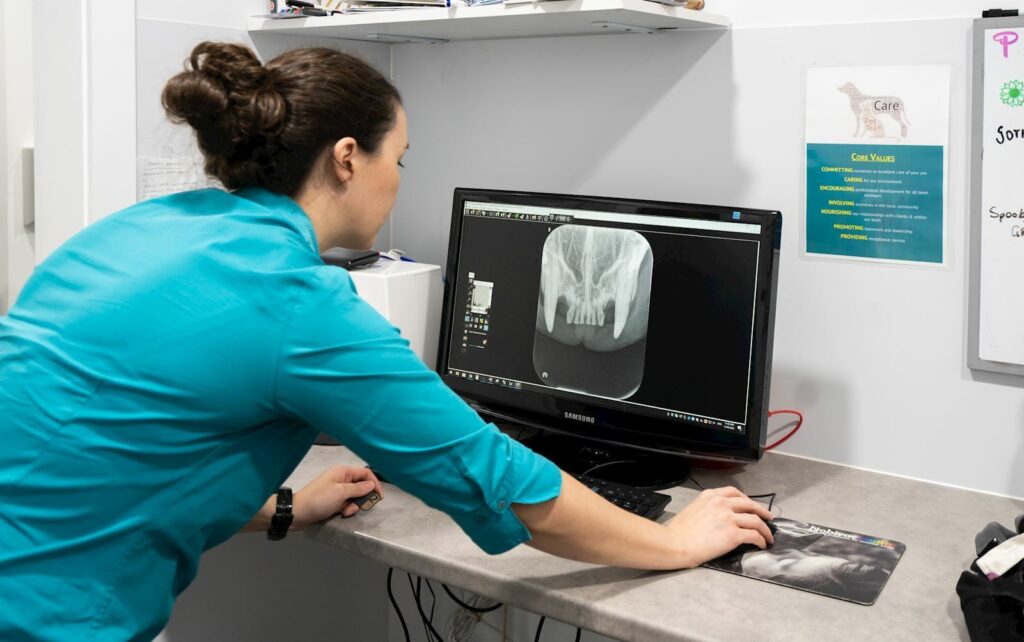Healthcare
Radiography

Our hospital is fully equipped to take radiographs (often called x-rays) of your pet. Our veterinarians will discuss your pet’s case and conduct a thorough physical examination to determine if your pet requires radiographs. Radiographs are a very important tool to help us diagnose diseases in animals, particularly for conditions involving bones, the chest or abdomen.
Most of our patients are admitted into hospital for the day to have radiographs taken, unless it is an emergency and we’ll take them immediately. We ask that you bring your pet in unfed on the morning of admission, as they will most likely be sedated or anaesthetised to allow us to take the best quality radiographs possible.
Once the radiographs have been taken we will give you a call or book an appointment for our veterinarians to show you the images and to discuss the diagnosis and treatment plan for your pet.

When we have radiographs taken the radiographer asks us to keep perfectly still, often in unnatural positions. Most pets would never lie still enough, in the correct position, for us to take good quality radiographs required to diagnose their condition. Sedation and anaesthesia allow us to get the most useful radiographs possible.
Taking a radiograph is very similar to taking a photo, except we use x-rays instead of light rays. Different tissues in the body absorb x-rays to differing degrees. Of all the tissues in the body, bone absorbs the most x-rays. This is the reason that bone appears white on a radiograph. Soft tissues, such as the heart, kidneys or other organs, absorb some but not all of the x-rays, so they appear on a radiograph in different shades of grey. The air-filled lungs absorb relatively few x-rays so appear dark grey or black on a radiograph. We will demonstrate and explain the radiographs when your pet goes home.



At North Maclean Family Vet we are very proud of our dental x-ray machine. To continue with our high standard of care, full mouth dental x-rays are included in every dental scale and polish that we do.
This ensures that any sub-gingival disease (disease affecting the roots/teeth below the gumline) that are not easily picked up in a physical examination, can be detected and treated before your pet becomes unwell and painful.


